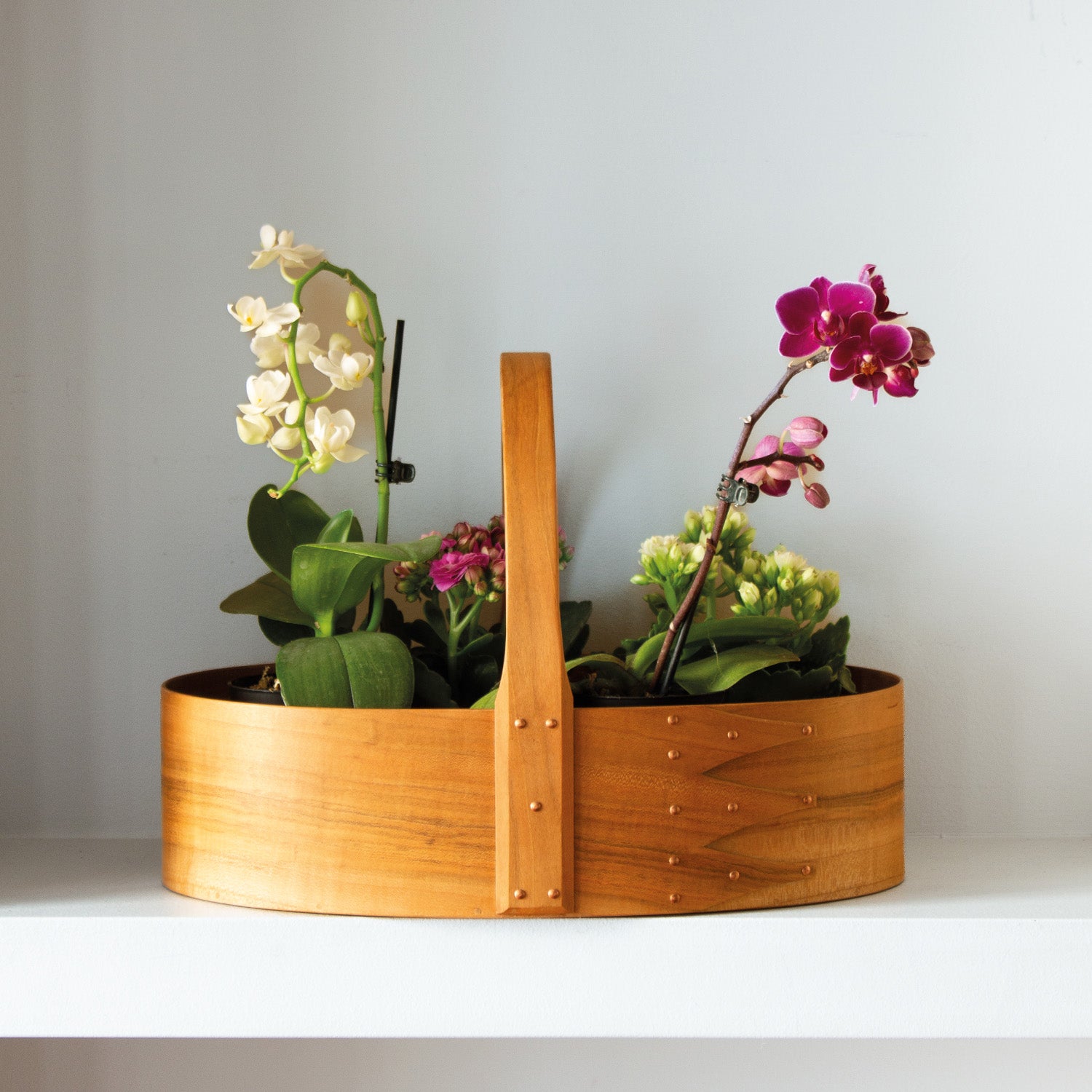
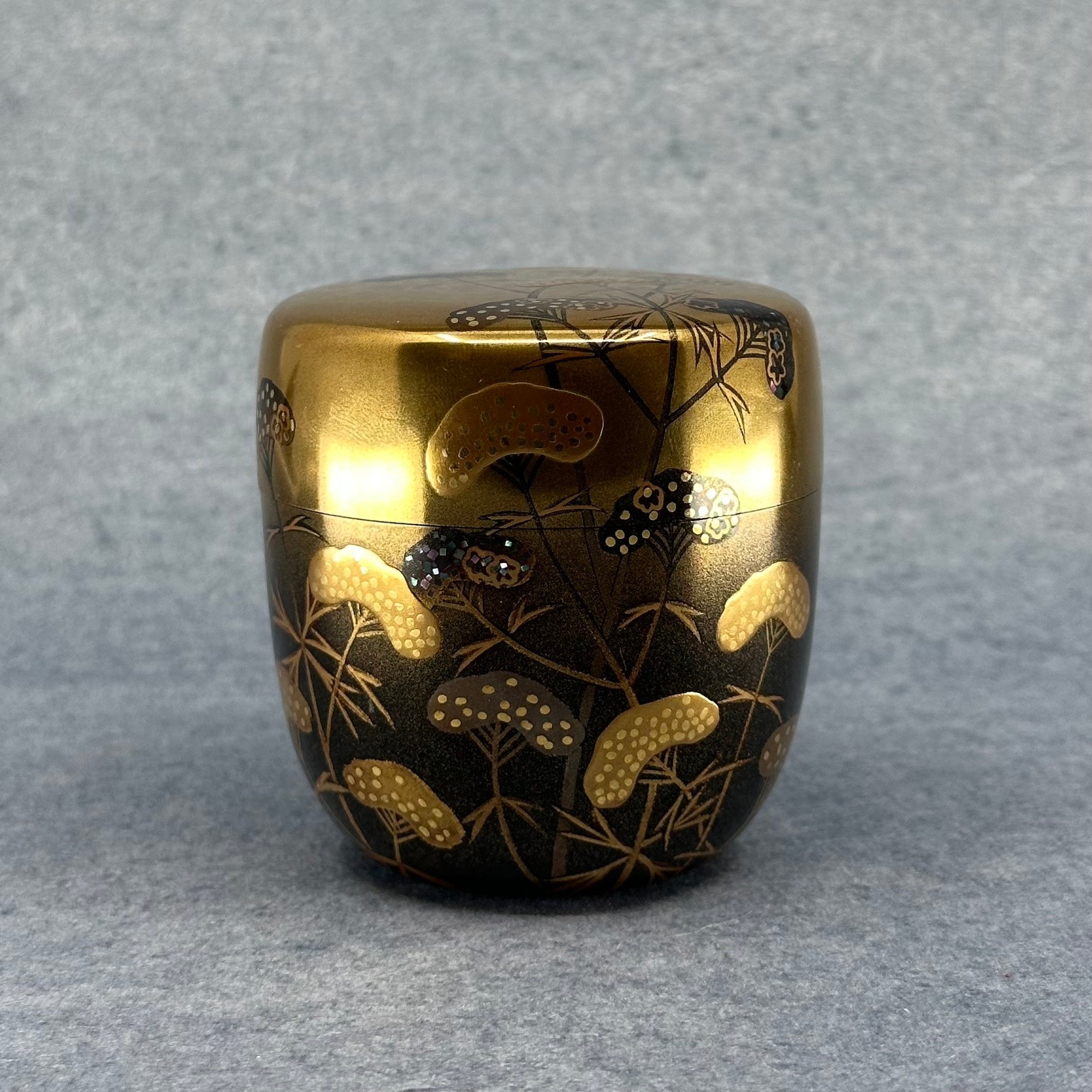
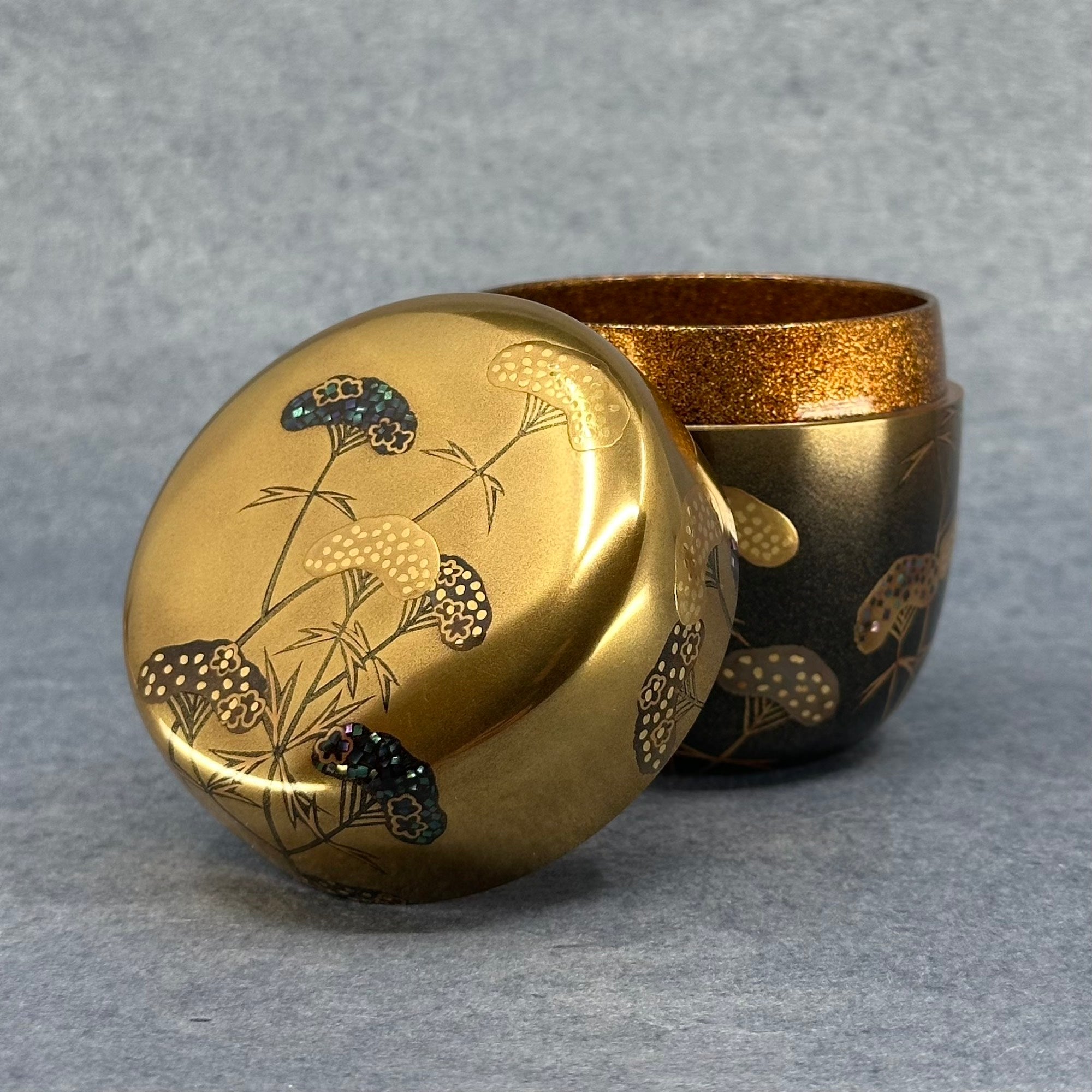

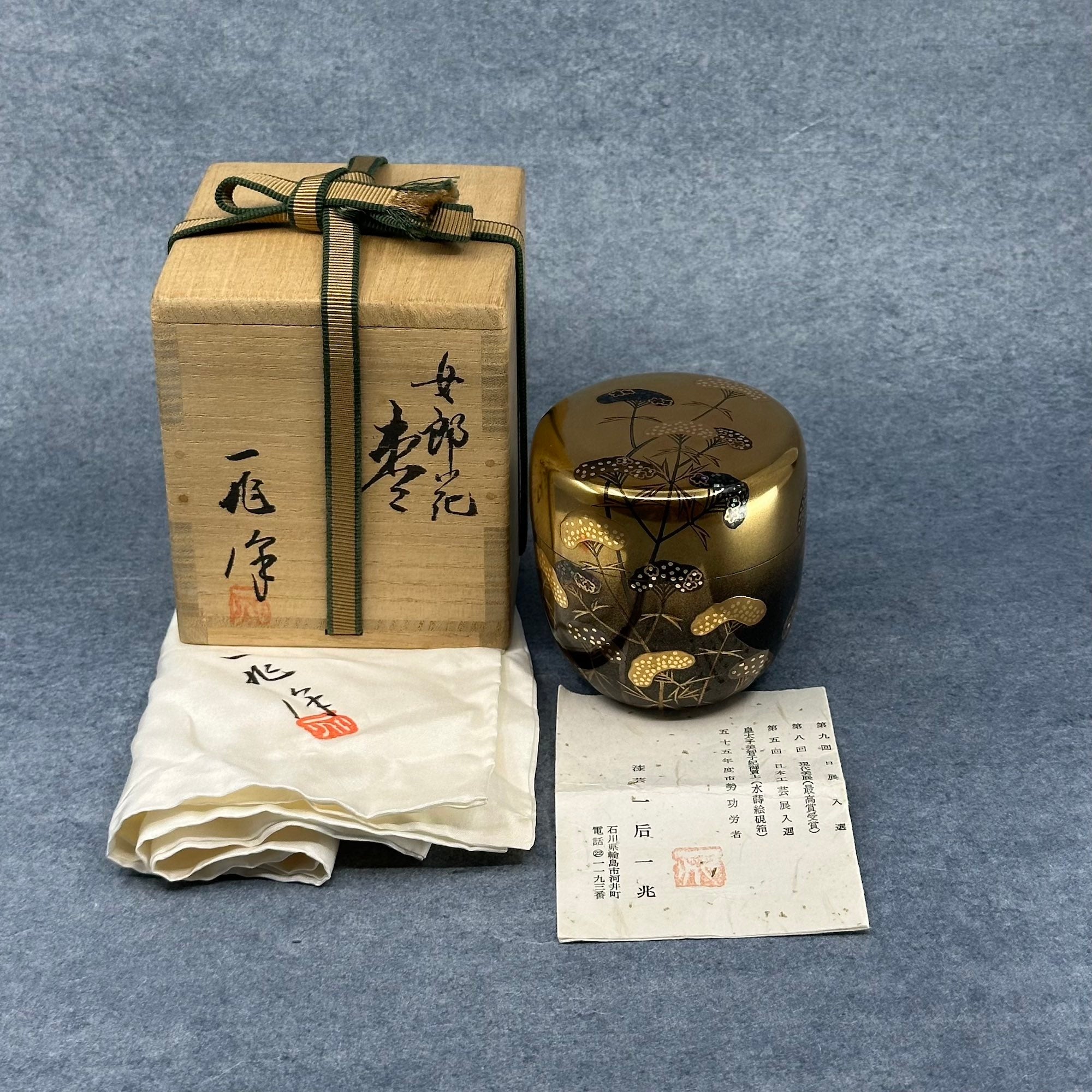

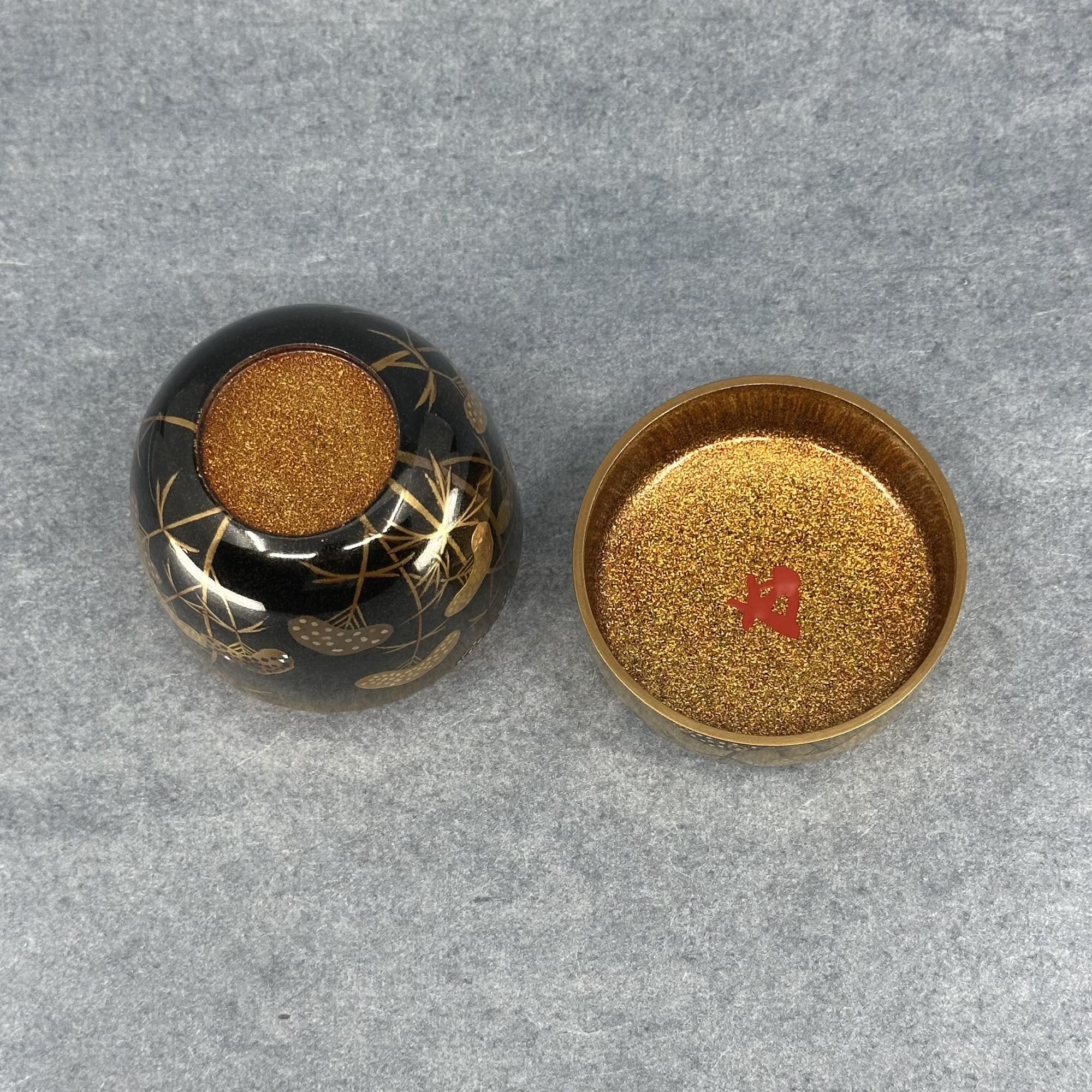
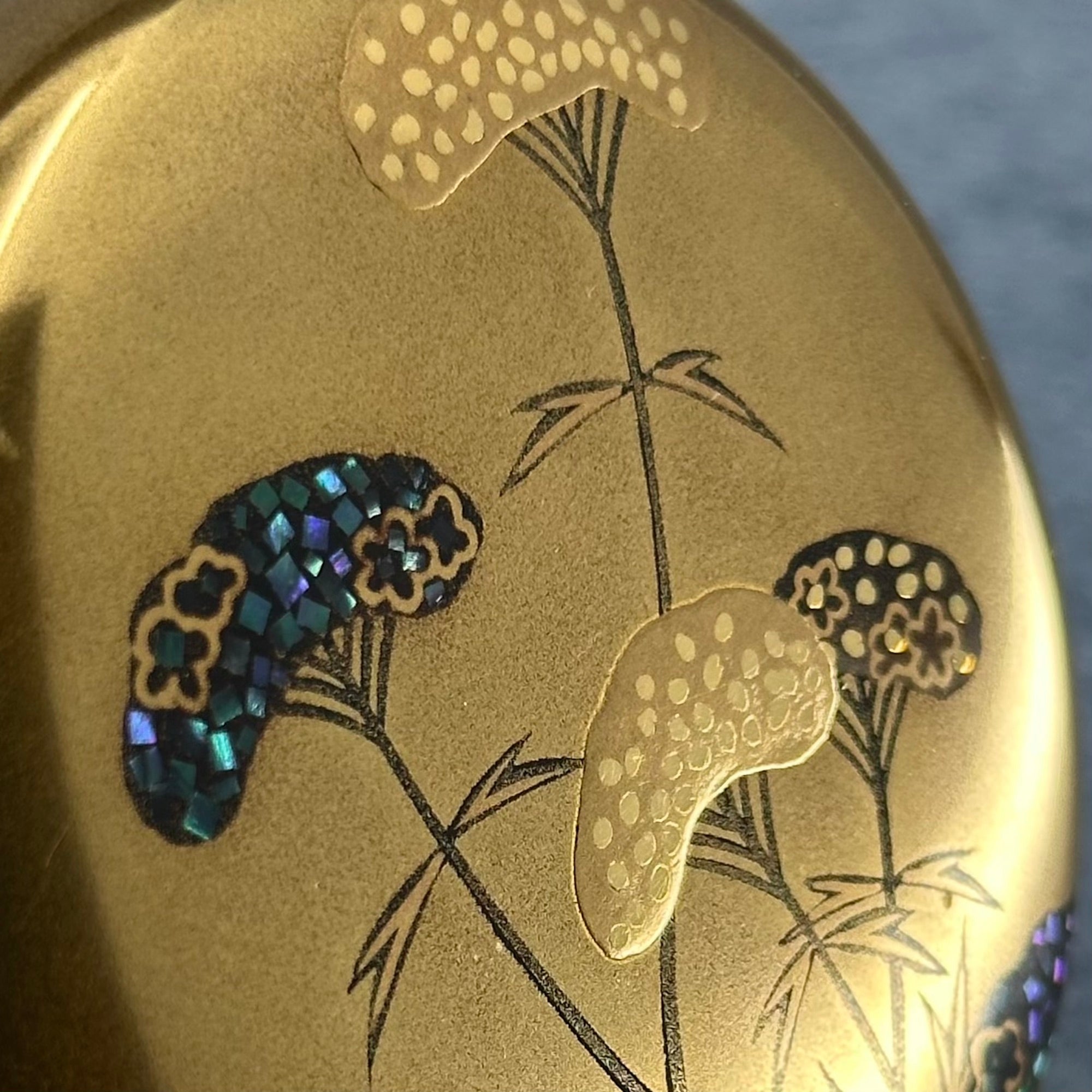




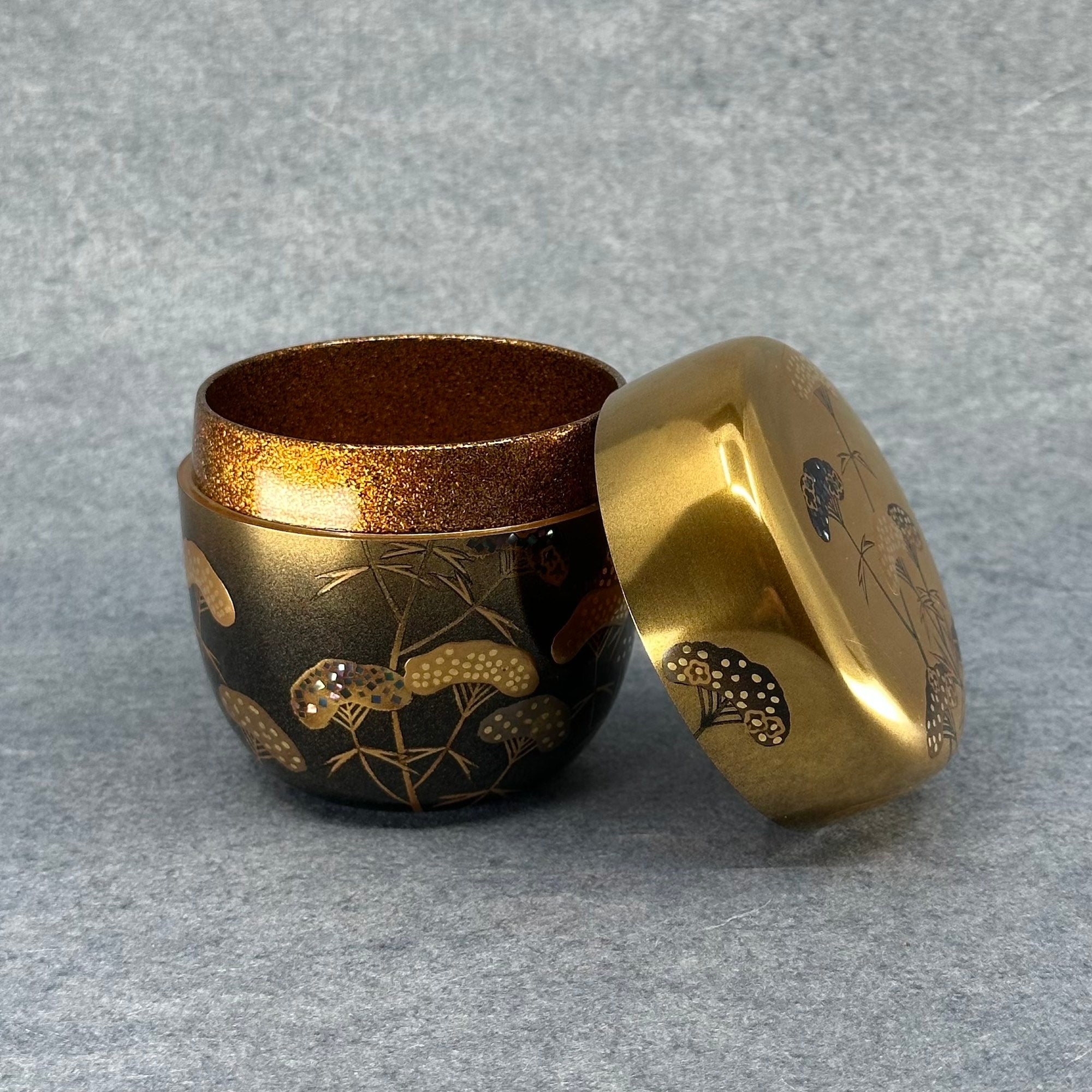


Natsume (tea caddy) in lacquer and gold, decorated with Ominaeshi (patrinia flower) by Ichigo Itchō
This natsume (a box used to present matcha tea powder during the Japanese tea ceremony) is a work by Ichigo Itchō, one of Japan's greatest lacquer masters of the twentieth century. Of classic dimensions, it displays a sumptuous decoration of gold and mother-of-pearl depicting the ominaeshi, prized for its delicate and airy blooms, and which is one of the Seven Autumn Flowers (a group of plants traditionally associated with the ephemeral and contemplative beauty of the season). The lid, entirely gilded with brilliant fine gold, and the subtle gradient from gold to glossy black urushi lacquer on the body give the piece a rare and superb visual presence. The interior, entirely finished with exquisitely fine nashiji (gold dusting), reveals at its center the calligraphic signature in red of the tea master Hounsai, whose mark further enhances the exceptional value of this natsume.
Decor and techniques
The decoration is executed in maki-e (powdering), a technique consisting of sprinkling fine gold powder onto the still-damp lacquer. The stems are made in hiramaki-e (flat decoration), where the gold is applied to the surface after a precise outline. The flowers have a slight volume achieved in taka maki-e (light relief), a process in which several layers of lacquer are superimposed before being powdered to create a delicate modeling. Several petals are inlaid with aogai (blue mother-of-pearl), fragments delicately cut, polished, and then inserted into the surface to produce blue-green reflections. Kirikane ( small raised gold squares) were also applied.
The lid is entirely crafted with a dense application of extremely fine gold powders, giving it a deep and even shine. The body features a carefully controlled gradient, where the density of gold gradually decreases to reveal a polished black roiro (mirror) lacquer, creating a visual effect of downward light.
The interior, lid and cup, is finished in nashiji (sparkling), a technique involving sprinkling tiny gold particles and then covering them with a thin layer of transparent lacquer before polishing. The piece is distinguished by the delicacy of the design, the masterful gold-to-black transitions, and the exceptional quality of the inlays, all characteristic of Ichigo Itchō's major works.
The craftsman
Ichigo Itchō, born in 1898 in Ishikawa Prefecture and died in 1991, is one of the great masters of Wajima-nuri lacquer in the twentieth century. A specialist in maki-e (folded doors), he distinguished himself with pieces of great precision, often characterized by an abundance of gold and remarkable finesse of design. He was selected on numerous occasions for major Japanese exhibitions, notably the Nitten Salon and the Japan Traditional Art Crafts Exhibition, and some of his works were acquired by prestigious institutions. His natsume (small wooden panels) are particularly sought after on the art market for the quality of their decoration, the mastery of powdering, and the balance of their composition.
Presentation
This natsume is accompanied by its original tomobako, a paulownia wood box closed with a sanadahimo cord. The tomobako bears Ichigo Itchō's signature, seal, and a description of the piece. The inside of the lid also features calligraphy by the tea master Hounsai, the fifteenth head of the Urasenke school. Inside the lid of the natsume is his kao, a traditional personal mark used to authenticate his writings. The combined presence of the calligraphy and the kao indicates that this piece was recognized and appreciated within the context of high-level chanoyu practice, significantly enhancing its value. The natsume is also signed (engraved) at its base by Ichigo Itchō. Finally, a protective cloth (tomonuno) bearing the artisan's seal and signature, and a shiori (information document about the artisan) complete the set.
Place of manufacture
Japan, Wajima, Ishikawa Prefecture.
Dimensions
Diameter 7.4 cm - Height 7.9 cm
Weight
Natsume alone: 88 g
Natsume, box and accessories: 217 g
Materials
Wood, Japanese urushi lacquer, maki-e (gold powdering), aogai (mother-of-pearl), raden (inlay)
Period
Shōwa era (1926 - 1989)
Condition
Very good condition
KNOW-HOW
Natsume (棗) are small boxes with few variations in shape and dimensions (which are codified), and which are made of Japanese urushi lacquer, welcoming the matcha tea powder during the traditional Japanese tea ceremony (chanoyu and sadō). They are magnificent objects that can be used for tea or superb decorative pieces to collect and to position individually or grouped on a pretty tray or in a display case. Modern productions are more often made of resin and not lacquer, and of molded wood powder or plastic. We only offer authentic traditional natsume in real Japanese urushi lacquer made according to the rules of the art. These objects are rare and precious, they are likely to increase in value. Read our article on natsume >
Traditional Japanese lacquer, urushi, comes from the sap of the lacquer tree (Rhus Verniciflua), which flows after incision of the bark. It is a very precious material, a tree will give a maximum of 200ml of sap in its life, which is worked by specialized craftsmen. It takes many operations, slow and meticulous, and several months of work to bring real lacquer objects to life. It is the oldest craft in Japan! Initially used to protect and waterproof objects, this immutable craft has become an art of extreme sophistication. If you want to know more about the art of Japanese lacquer, you can read our dedicated article > .
DELIVERY
Delivery
Free delivery in mainland France for purchases over €200. Orders are generally dispatched within 2 working days, except in special cases, as indicated in the banner at the top of the website.
Precious items are wrapped in beautiful fabric, beautifully knotted according to the precious Korean art of pojagi. Some exceptions apply, especially if the items are large. Learn more >
Detailed delivery information is available via this link >
Your invoice will be sent by email
Payment methods
By card (Stripe operator): Visa, MasterCard, Discover, American Express.
Secure card payment with 3D Secure.
By PayPal, Apple Pay, Google Pay and Shop Pay
Returns and exchanges
14 days to change your mind.
CARE INSTRUCTIONS
Clean with a very soft cloth to avoid scratches, soaked in a little warm water if necessary (never soak your lacquer objects). No microwave, dishwasher, dryer. Do not expose to direct sunlight for a long time (risk of discoloration). If the atmosphere is very dry and very hot, and to avoid the risk of cracking, you can place a glass filled with water next to your lacquer object.
Choose options
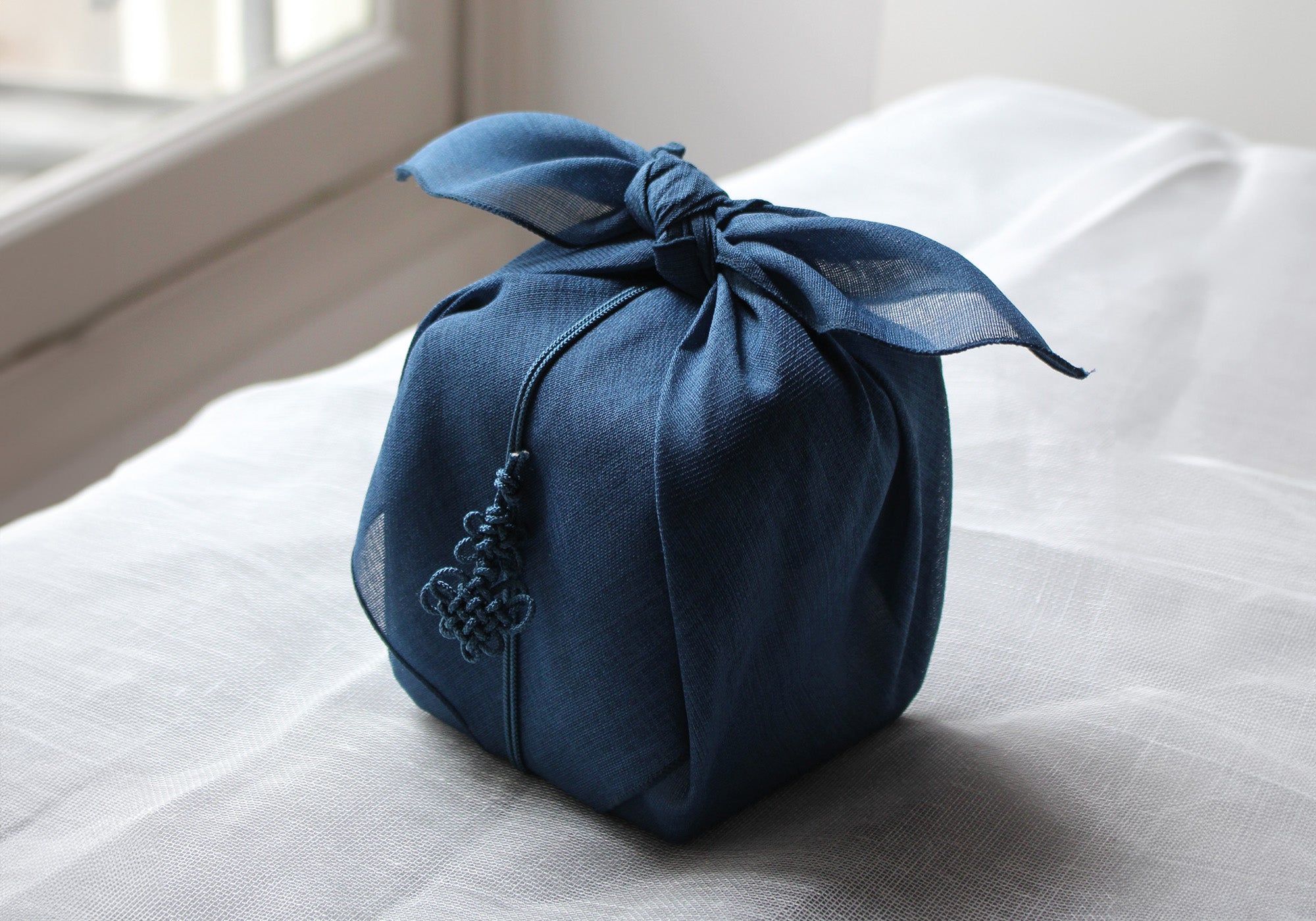
The art of wrapping
The exceptional items are wrapped in a beautiful fabric beautifully knotted using the little-known art of Korean pojagi and decorated with a delightful maedup (Korean ornamental knot). Details and conditions >





